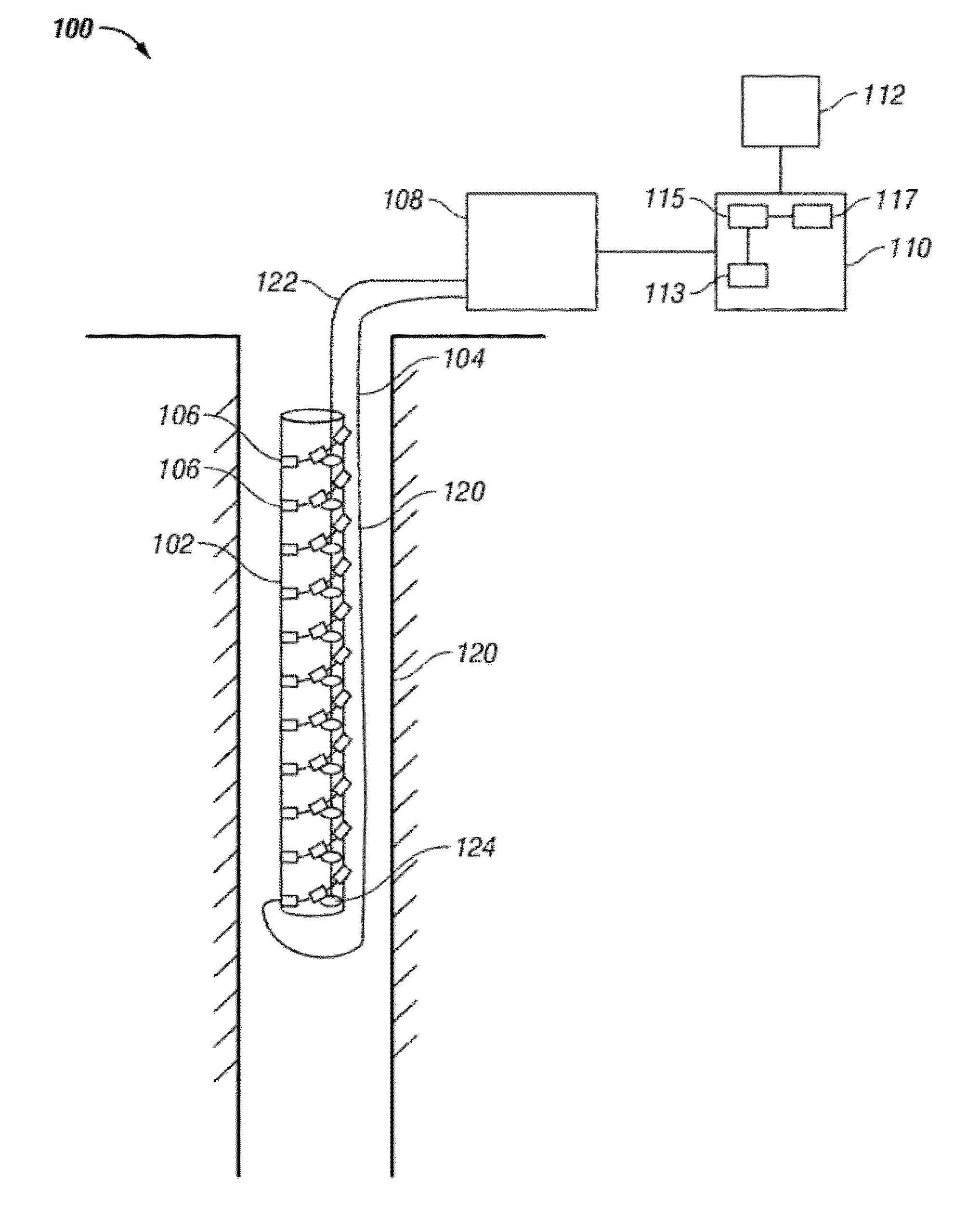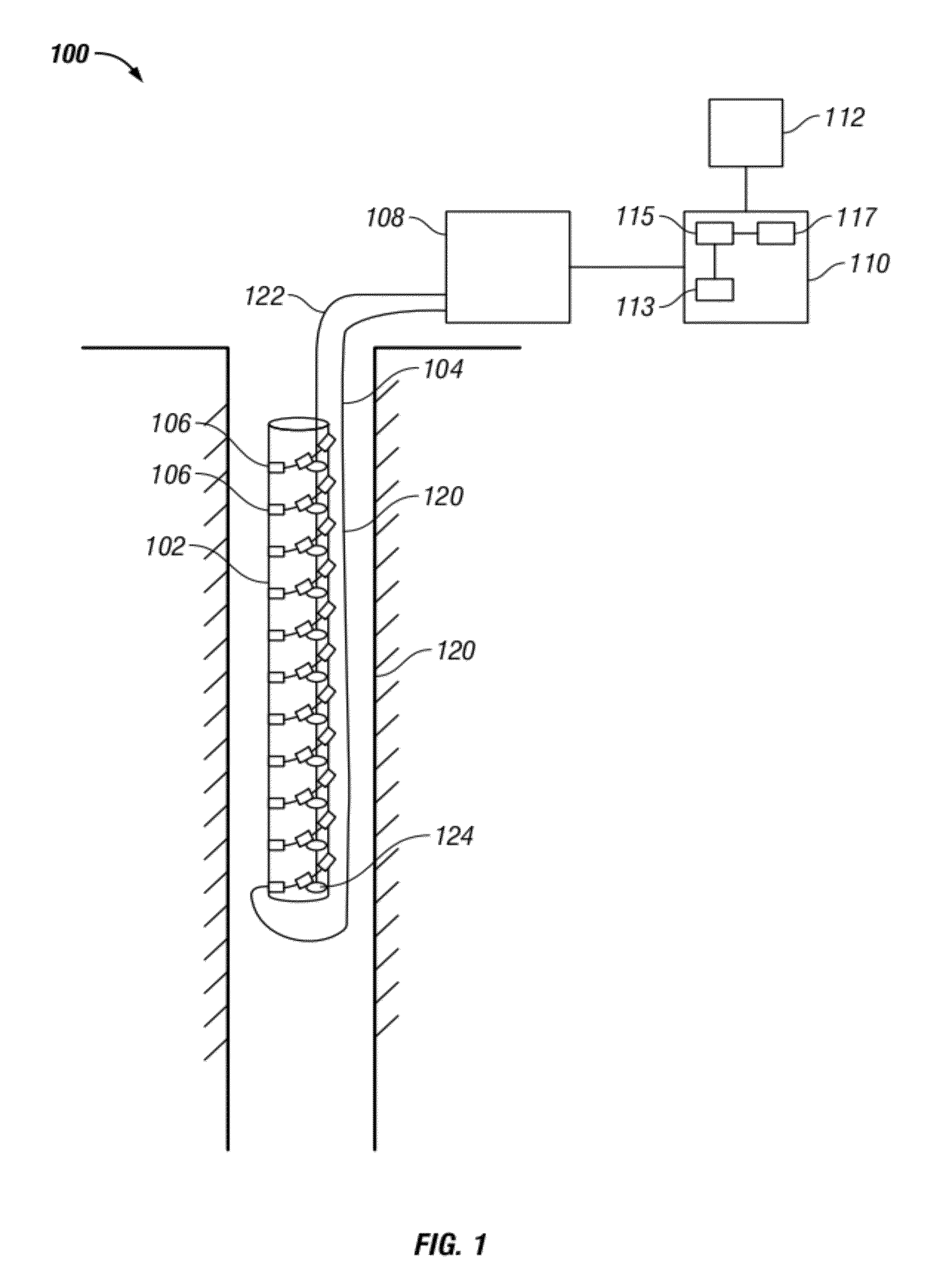Interpretation of Real Time Compaction Monitoring Data Into Tubular Deformation Parameters and 3D Geometry
a technology of compaction monitoring and data analysis, applied in the direction of instruments, structural/machine measurement, force/torque/work measurement, etc., can solve the problems of tubular damage or even well failure, large stress, and both revenue generation and operation costs
- Summary
- Abstract
- Description
- Claims
- Application Information
AI Technical Summary
Problems solved by technology
Method used
Image
Examples
Embodiment Construction
[0032]FIG. 1 shows an exemplary embodiment of a system 100 for determining a deformation of a tubular 102 disposed in a wellbore 120. The tubular may be any tubular typically used in a wellbore, such as a well casing or a drilling tubular, for example. In addition, the present disclosure is not limited to a tubular in a wellbore and may also be used on any exemplary member such as a casing, a sand screen, a subsea riser, an umbilical, a tubing, a pipeline, a cylindrical structure bearing a load and so forth. The exemplary member may undergo a variety of deformations. The exemplary member includes a plurality of sensors at various locations on the member. Each of the plurality of sensors obtains a measurement related to strain at the related location on the tubular. In various embodiments, the plurality of sensors may be Bragg grating sensors, Brillouin fiber optic sensors, electrical strain sensors, sensors along a fiber optic cable, or any other device for obtaining a strain measur...
PUM
| Property | Measurement | Unit |
|---|---|---|
| wavelength shift | aaaaa | aaaaa |
| compression/tension | aaaaa | aaaaa |
| spatial frequency | aaaaa | aaaaa |
Abstract
Description
Claims
Application Information
 Login to View More
Login to View More - R&D
- Intellectual Property
- Life Sciences
- Materials
- Tech Scout
- Unparalleled Data Quality
- Higher Quality Content
- 60% Fewer Hallucinations
Browse by: Latest US Patents, China's latest patents, Technical Efficacy Thesaurus, Application Domain, Technology Topic, Popular Technical Reports.
© 2025 PatSnap. All rights reserved.Legal|Privacy policy|Modern Slavery Act Transparency Statement|Sitemap|About US| Contact US: help@patsnap.com



